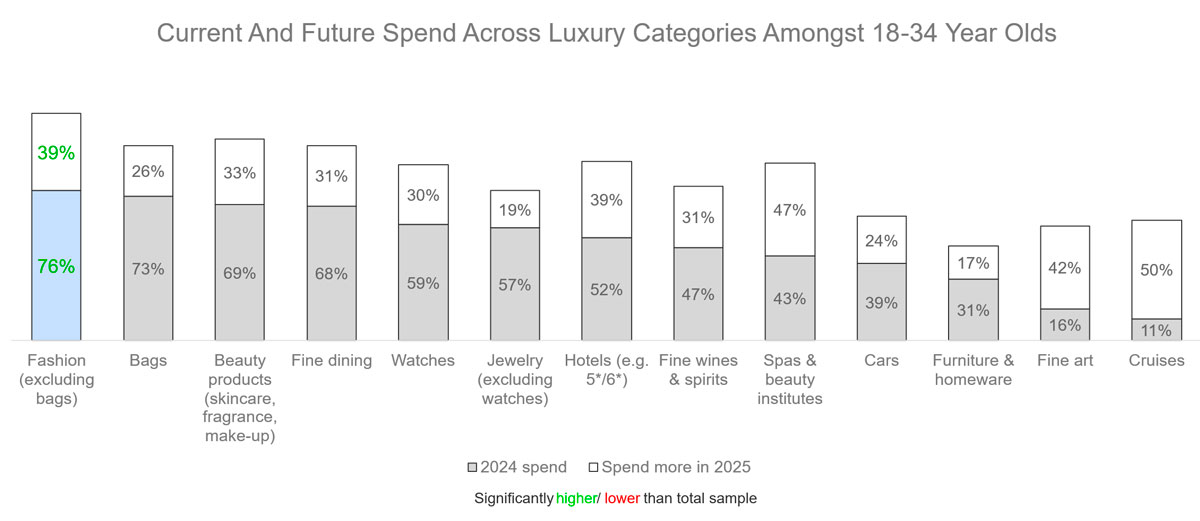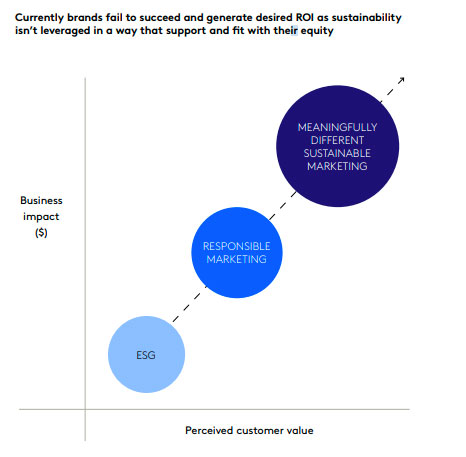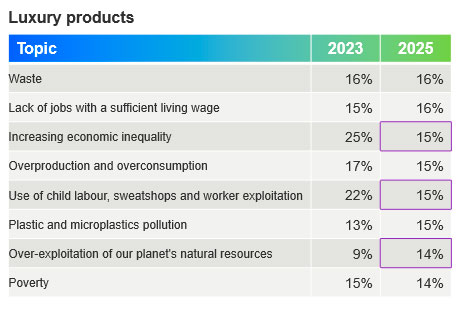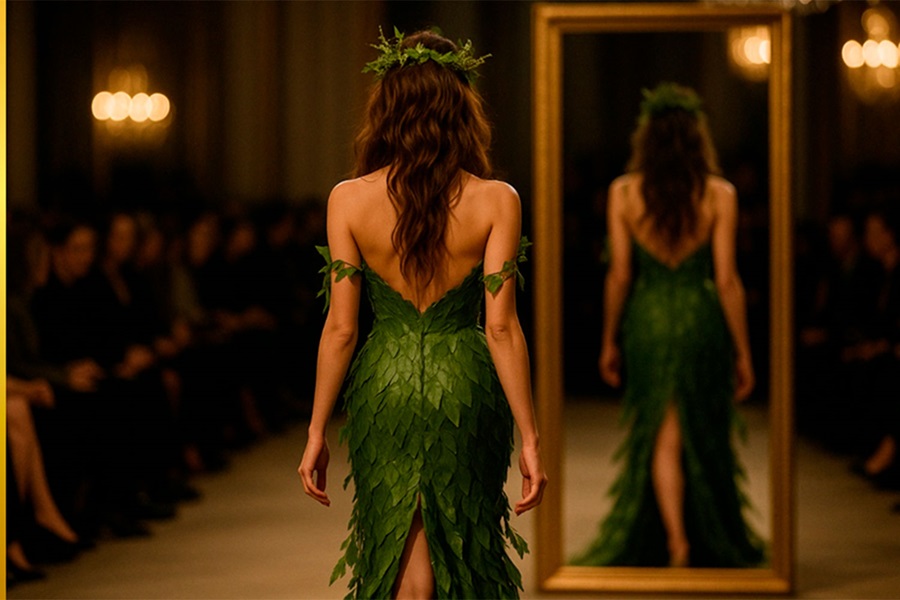For decades, luxury lived in glass boxes — immaculate, distant, and mysterious.
You could look at it.
You could long for it.
But few ever questioned it — reverence was the ritual.
Now, that glass is cracking — and being reshaped into a new lens by a generation that doesn’t just consume luxury, they interrogate it.
In America, Gen Z is stepping into economic power. As Kantar MONITOR highlights, this generation is gaining both spending influence and cultural authority — reshaping how brands operate. They’re digitally native, culturally fluent, and unafraid to challenge the status quo. In 2023, MONITOR estimated that Gen Z held $984 billion in spending power. By 2025, this number had grown exponentially to $9.8 trillion, with projections estimating it could reach $12.8 trillion by 2030. With these figures continuing to rise, connecting with this generation authentically requires marketers to focus on their attitudes and behaviours — not just their age. According to Vogue Business, Gen Z’s loyalty hinges on shared values, transparency, and cultural alignment — not just aesthetics or tradition. Their spending influence is rooted in a mission-driven identity, where cultural authority stems not from traditional institutions but from communities built on authenticity and shared values.
This generation isn’t turning away from luxury. They’re turning it inside out — embedding their values of sustainability, transparency, and self-definition into every purchase.The study New Desires, conducted by Kantar and Altiant, found that 84% of young luxury buyers now see luxury as an immersive experience rather than a possession.
Luxury is no longer just about owning something beautiful.
It’s about believing in what you own.
Spotlight on luxury
Let’s be clear: luxury isn’t in decline — it’s evolving.
In America, Fashion was the most purchased category of luxury goods in 2024 for those 18-34. Their appetite is only growing in 2025, with this group significantly more likely to spend more this year than their older counterparts (Kantar, Luxury: New Desires). This emerging trend positions them as the key demographic for luxury brands to captivate.

Redefining the luxury buyer: When shopping becomes self-expression
Raised on climate headlines and TikTok trends, young affluent Americans possess a rare combination of information access and identity awareness. Their path to purchase is exploratory — led by curiosity, fueled by values. The Luxury New Desires report sees them much more likely than older generations to use social media at both the start of their purchase journey (inspiration 57%) and the end (purchase 31%).
Social media sites have become search engines, and a big reason for this is the rise of micro-influencers. Garnering trust and acting as mirrors to their belief systems, these ambassadors – paid or unpaid – are more effective at marketing a product than traditional macro-influencers.
When Gen Z shares what they’ve bought — which they do more than any other group — it’s about signaling that identity: “This is what I stand for.” They expect brands to reflect those values back with clarity, confidence, and consistency. Kantar BrandZ data shows Gen Z are 1.5× more likely than older cohorts to expect brand values to align with their own. As this generation increasingly incorporates their values into purchasing decisions, building strong, value-based connections requires brands to craft authentic stories that show what they stand for. Kantar’s Retail Reveal study shows Gen Z prefers storytelling over sales pitches. This goes even further, with 51% wanting to hear from creators, not marketers. They seek real stories, not polished statements. Give the microphone to the hands behind the product.
A generational tension: Tradition with transparency
Like any evolution, the genetic makeup of luxury can be traced back to its roots. In many ways, younger consumers echo the values of the generation before. At its core, Luxury remains a statement of personal style — and of status.
But we’re seeing their purchase decisions become more deliberate, conscious and multidimensional. Expression of knowledge is something felt by 79% of luxury consumers – that’s 20% more than the previous generation. And 69% say their purchasing is guided by environmental conscience — even to the point of rejecting brands that fall short.
That level of commitment to sustainability isn’t a side note — It’s a north star.
And the expectation is clear: 46% of consumers believe environmental responsibility lies with brands, yet only 28% believe brands are taking real action (Kantar, Creative Knows Sustainability).
Luxury now has a dual mandate: it must inspire emotionally and align ethically. In a value-led world, a brand without purpose is invisible next to one that speaks out for something real. But the two marry more than you would think.
When sustainability becomes true luxury
The 2023 Kantar BrandZ Most Valuable brands showed that Sustainability contributed to $193 billion across the Global Top 100 brands. It is a huge lever to brand growth – but it’s not just a trend, it’s a threshold. Consumers expect brands to meet a baseline level at the very minimum – so to be distinct in the category, they need to be meaningfully different.

One path through which brands can become meaningfully different is by addressing systemic industry challenges in new ways. The Kantar Sustainability Sector Index for 2025 shows that this change must be authentic, with 66% of consumers concerned about brands having commercial agendas, and 57% of consumers having seen misleading sustainable actions taken by luxury brands. Targeting the right issues is the first step to this. There are many concerns that come under the umbrella of sustainability, and they vary across categories and consumers. For luxury brands in the USA, waste reduction is the primary issue to be addressed, along with socioeconomic welfare.

Let’s bring this back to our Gen Z audience. They are twice as likely to belong to Kantar’s Eco-Actives segment — a group that doesn’t just care about sustainability, but acts on it, even when it requires sacrifice. These early adopters are more likely to align their values with their behaviors — and they expect the same from brands.
But sustainability isn’t just box-ticking, it’s emotive. It demands conviction, and often an upfront investment that won’t deliver immediate returns. Still, for a generation that values meaning over material, it’s an investment worth making.
When sustainability becomes a status symbol
We’ve long treated sustainability and luxury as incompatible. One meant sacrifice. The other, indulgence.
But for Gen Z, sustainability is the new luxury — not because it replaces craftsmanship, but because it demands more from it. Luxury has always celebrated artisanship and heritage. But now, that must be paired with transparency, purpose, and values. This generation still reveres timeless design — but timelessness, to them, must include traceability.
Craftsmanship is still respected, but it can no longer stay silent about who made it, where, and under what conditions. In this way, Gen Z isn’t rejecting traditional luxury; they’re evolving it. In their world, what’s rare isn’t material — it’s meaning.
Patek Philippe’s lifetime-guaranteed watches; Leatherology’s bespoke goods; refillable beauty products — these aren’t just ‘green’ choices. They’re a flex.
Because for this generation, the story is the value. It's what makes luxury matter.
Who’s doing it right - and where’s the white space
According to Kantar’s Sustainability Sector Index, which monitors consumers’ sustainability perceptions across 42 sectors, luxury falls in the bottom quartile — meaning there is significant room for improvement when it comes to building positive perceptions for the industry around sustainable and ethical practices. Still, some brands are breaking through that perception barrier. Let’s take a look at an example.
Paynter, the British label, releases just four made-to-order jacket drops each year. No inventory. No waste. Every piece is numbered, timed, and tells a story. Their collections sell out in minutes — not because of hype, but because of trust.
'They built sustainability into this more overtly. Two jackets didn’t make the cut to sell, but instead of wasting, Paynter partnered with the sustainability company Greater Goods to upcycle the goods. You guessed it – they wove in their core brand strengths of exclusivity and craftsmanship to make another drop of limited-edition products.

Brands must be meaningfully different to build a powerful connection with this value-driven generation. By doing so, brands can embody sustainability beyond a mere compliance requirement into a compelling narrative that wins hearts, minds, and market share.
There is white space for a luxury brand to lead not just with eco-products, but with eco-culture. A brand that doesn’t just sell aspiration — but redefines it through transparency, responsibility, and meaning. Think resale culture, repair not replace, and slow (not fast) fashion.
What brands can do now
The next luxury advantage isn’t faster shipping or louder drops.
It’s empathy. Clarity. Consistency. And above all – the courage to be transparent.
-
Demonstrate, don’t declare
Transparency isn’t a press release. It’s a habit. Bring consumers along on your journey from process to progress, showcasing your people.
True credibility comes from balancing substance, directionality, and impact. Make sure sustainability is integrated into meaningful business practices — not side projects — and show how performance is evolving. What you say must be both authentic and verifiable.
-
Iconic by nature
Don’t just label it sustainable. Make it feel like it couldn’t have been made any other way. Refill stations, zero-waste packaging, and responsible materials should feel luxurious — not like a compromise.
20% of Gen Z say they buy luxury to share it during times of economic uncertainty. Make sure what they’re sharing isn’t just a product - it’s a point of view.
-
Design with conviction
For Gen Z, exclusivity comes not from price, but from purpose. Products should be made to last — not just physically, but emotionally.
But design alone isn’t enough. This generation is moved by conviction. They want brands that stand for something — and show it.
To lead, not follow, luxury brands must harness the enterprise capabilities that have powered challenger success: agility, customer centricity, innovation, data-driven decision-making, direct-to-consumer mastery, and storytelling.
Combine these with principled design, and your brand becomes more than desirable. It becomes unforgettable.
The new luxury equation
As luxury evolves, brands that champion transparency will not only reveal the truth behind their products but also become the enchanted mirrors through which Gen Z's values and dreams are illuminated — casting a spell of authenticity and aspiration that captivates the future.
In a world saturated with products, purpose is true prestige.
Because luxury can still be beautiful, iconic and emotional—but now, it must also be accountable.
And the brands that understand that?
They'll define what's next.





